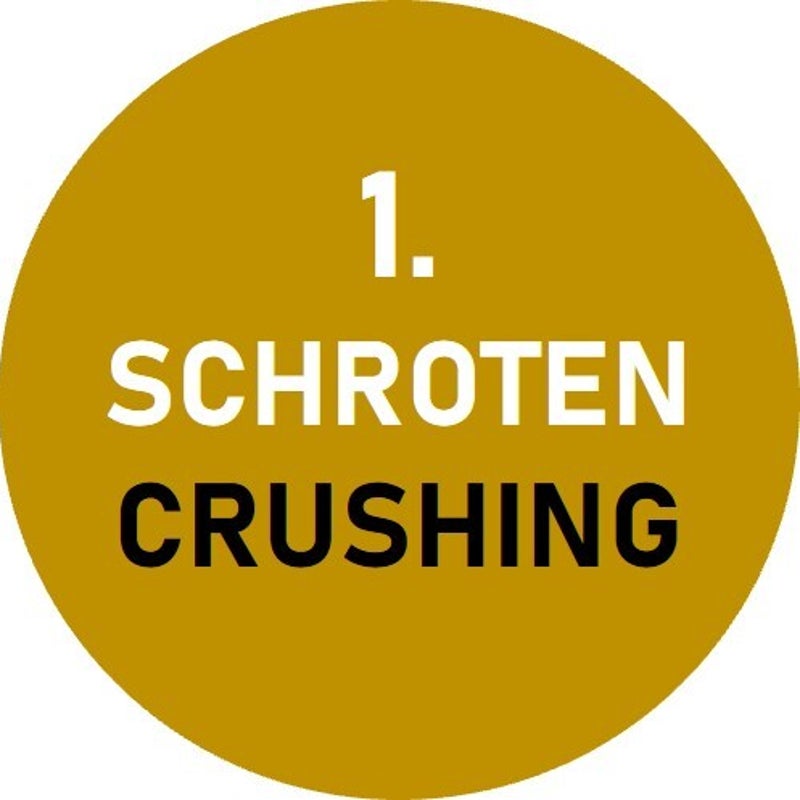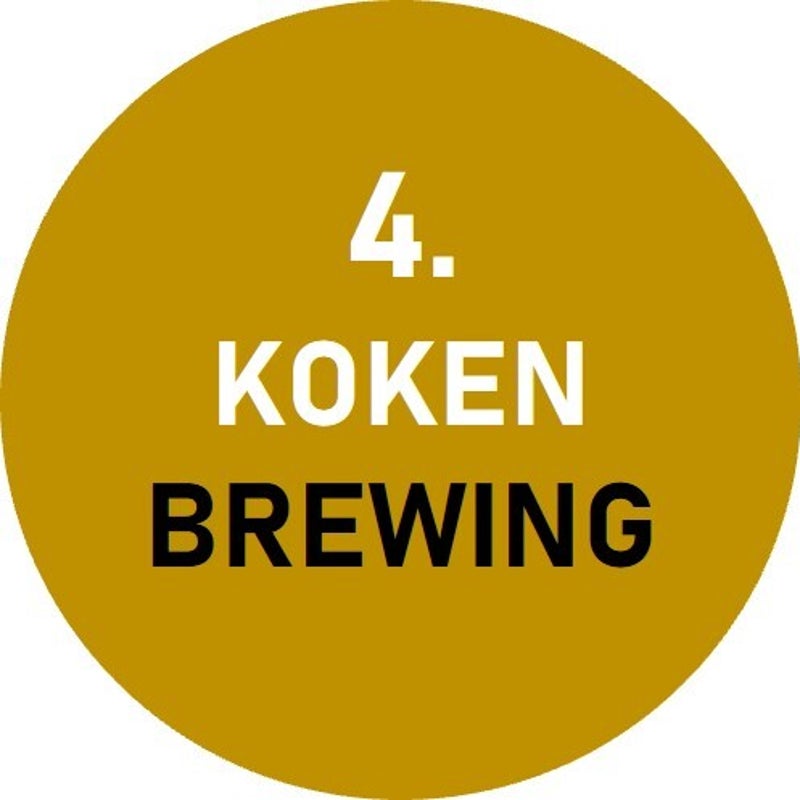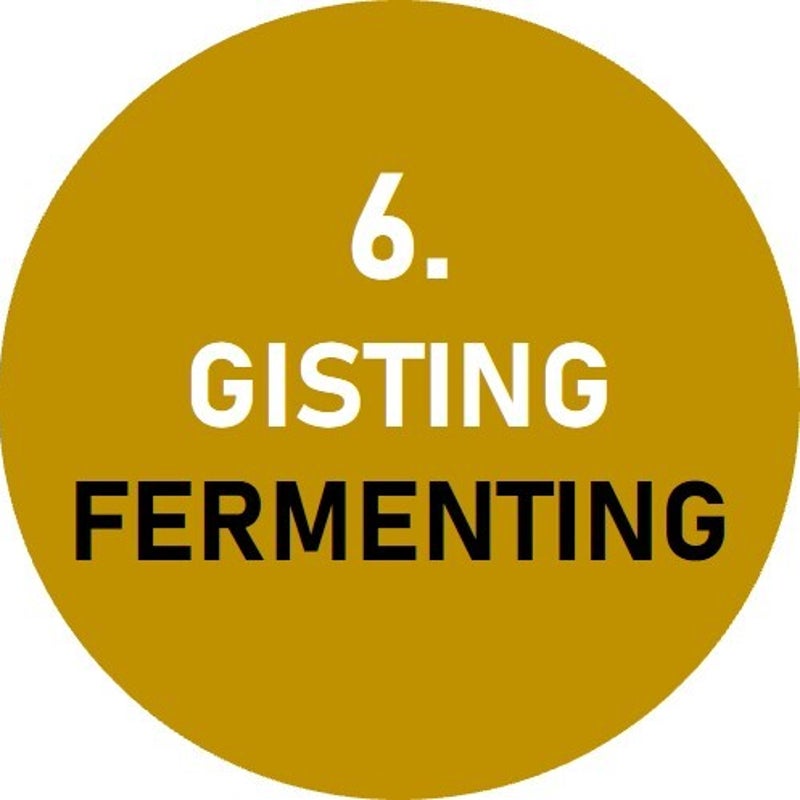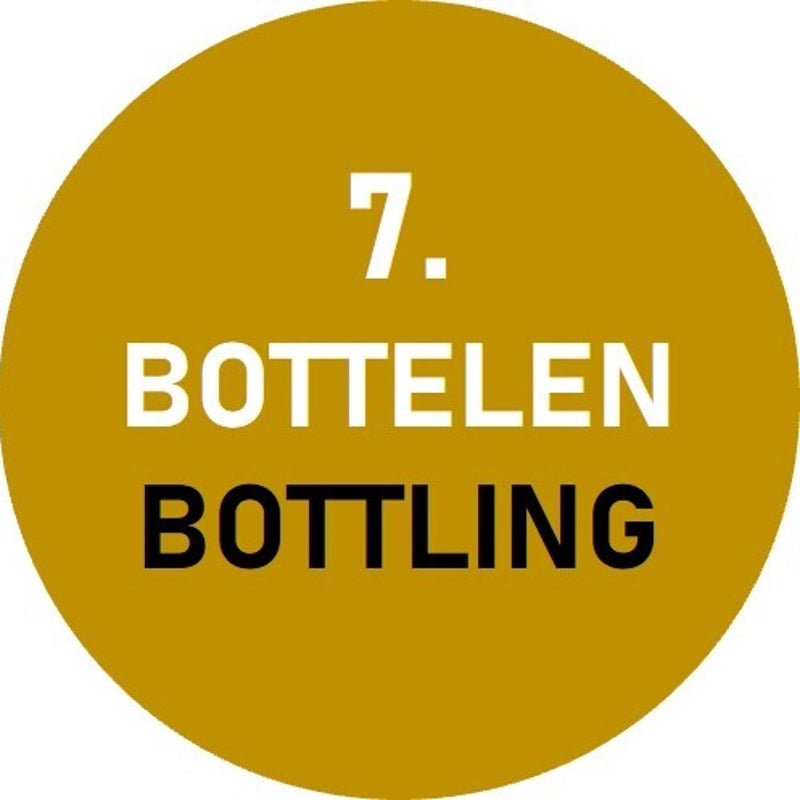Brewing Process

DE EERSTE STAP is het schroten van de gemoute gerst met een schrootmolen waar de mout grof gemalen wordt zodat het zetmeel zich gaat lossen en later beter opgenomen kan worden door het water. Indien de mout te fijn geschroot wordt dan heb je een soort meel wat later niet goed is voor het filterbed. De kafjes van de granen kunnen dan ook te veel beschadigd worden en dit kan leiden tot een wrang mondgevoel door de tannines
THE FIRST STEP is the scraping of the malted barley with a scrap mill where the malt is coarsely ground so that the starch will dissolve and can later be better absorbed by the water. If the malt is shredded too finely, you have a kind of flour that is not good for the filter bed later on. The husks of the grains can be damaged too much and this can lead to a sour mouthfeel due to the tannins

DE GESCHROTE MOUT wordt tijdens deze stap met warm water (tussen 62 en 72°C) gemengd. Het zetmeel zal omgezet worden tot suikers die later in het brouwproces worden omgezet in alcohol. Een maisch-schema wordt opgemaakt waarbij het beslag (brouwwater & gestorte mout) in verschillende temperatuurstappen opgewarmd zal worden. Elke stap brengt een enzymproces op gang; naargelang de stap zijn dit enkelvoudige vergistbare suikers of complexe suikerketens. Dit verschil bepaalt of de suiker vergistbaar is of niet en zal uiteindelijk ook het karakter en deels de smaak van het bier bepalen
THE SCRAPED MALT is mixed with warm water (between 62 and 72°C) during this step. The starch will be converted into sugars that are converted into alcohol later in the brewing process. A mashing schedule is drawn up in which the batter (brewing water & poured malt) will be heated in different temperature steps. Each step initiates an enzyme process; depending on the step, these are simple fermentable sugars or complex sugar chains. This difference determines whether the sugar is fermentable or not and will ultimately also determine the character and partly the taste of the beer.

HET BESLAG moet nu gefilterd worden zodat er enkel een vloeistof overblijft (wort). Het resterende mout en kaf (draf) blijft achter op de filterplaat en deze wordt nog met heet water gespoeld om zo de achtergebleven suikers later nog te kunnen gebruiken. Draf (bostel) wordt vooral gebruikt als veevoeder maar je kan er ook brood mee bakken. Bostel is erg gezond; het is erg eiwit- en vezelrijk, bevat weinig suikers en zorgt dat het brood lekker mals blijft.
THE BATTER must now be filtered so that only a liquid (wort) remains. The remaining malt and spent grain remains on the filter plate and it is rinsed with hot water so that the sugars left behind can be used later. Spent grain is mainly used as animal feed, but you can also bake bread with it. Spent grain is very healthy; it is very high in protein and fiber, contains little sugar and ensures that the bread stays nice and tender

HET WORT dient nu gekookt te worden voor een periode van 60-90 minuten. Eiwitten vlokken uit tijdens het koken. Het koken zorgt ook voor het doden van alle bacteriën die in de wort aanwezig zijn en ook om ongewenste smaakstoffen te verwijderen. Tijdens deze fase worden ook kruiden toegevoegd of andere aroma’s maar ook bitterhop als natuurlijk conserveermiddel en ook voor de smaak. Aromahoppen worden tegen het einde van het kookproces toegevoegd voor extra aroma's.
THE WORT will now be boiled for a period of 60-90 minutes. Proteins flake out during cooking. Boiling also kills any bacteria present in the wort and also removes unwanted flavours. During this phase, herbs or other aromas are also added, but also bitter hops as a natural preservative and also for the taste. Aroma hops are added towards the end of the cooking process for additional aromas.

VOORALEER gist toe te voegen moet de wort worden afgekoeld tot 20-25°C (hangt af van het soort gist) aangezien de gist niet tegen hoge temperaturen kan. Het afkoelen dient zo snel mogelijk te gebeuren zodat het wort niet besmet kan geraken met bacteriën en schimmels eens de temperatuur onder de 65°C zakt. Het is daarom heel belangrijk om vanaf dit moment heel proper te werken.
BEFORE adding yeast, the wort must be cooled to 20-25°C (depending on the type of yeast) as the yeast cannot withstand high temperatures. Cooling should be done as quickly as possible so that the wort cannot become contaminated with bacteria and fungi once the temperature drops below 65°C. It is therefore very important to work very cleanly from this moment on.

AAN HET afgekoelde wort wordt gist en zuurstof toegevoegd noodzakelijk voor reproductie van de gistcellen. De gist zet de suikers om in alcohol en koolzuurgas eens dat de zuurstof is opgebruikt. Elke giststam geeft ook een smaak en aroma aan het bier. De hoofdgisting begint al binnen de 24 uur en duurt vaak een 5-tal dagen duren. Na de hoofdvergisting kan (moet niet) het jongbier overgeheveld worden naar een lagertank en de nagisting begint tot alle vergistbare suikers vergisten. Dit kan een 1-3 weken duren. Bij sommige bierstijlen zoals een IPA wordt er tijdens deze fase ook dry-hopping toegepast, waarbij aromahoppen worden toegevoegd, zoals de naam aangeeft dragen deze hopsoorten bij tot een mooie aroma.
YEAST and oxygen are added to the cooled wort, necessary for the reproduction of the yeast cells. The yeast converts the sugars into alcohol and carbon dioxide once the oxygen has been used up. Each yeast strain also imparts a flavour and aroma to the beer. The main fermentation starts within 24 hours and often lasts about 5 days. After the main fermentation, the young beer can (not needed) be transferred to a lager tank and the secondary fermentation begins until all fermentable sugars ferment. This can take 1-3 weeks. With some beer styles such as an IPA, dry-hopping is also applied during this phase, where aroma hops are added, as the name indicates, these hops contribute to a nice aroma.

VOORALEER te bottelen wordt er bottelsuiker toegevoegd aan het bier om meer koolzuur en alcohol te krijgen. Soms wordt er ook bottelgist toegevoegd, wanneer de gist volledig is uitgeput of wanneer er te lang gewacht wordt met het bottelen. Het bier kan voor het bottelen ook nog gefiltered worden zodat er geen of minder bezinksel in de fles zit maar niet alle brouwers doen dit. Daarna een mooi etiketje op de fles plakken en wachten op de volgende stap.
BEFORE bottling, bottling sugar is added to the beer to get more carbon dioxide and alcohol. Sometimes bottling yeast is also added when the yeast is completely exhausted or when bottling is delayed too long. The beer can also be filtered before bottling so that there is no or less sediment in the bottle, but not all brewers do this. Then stick a nice label on the bottle and wait for the next step.

DE HERGISTING kan plaatsvinden op fles, vandaar de benaming "hergisting op fles" op etiketten; maar het kan ook in een grote gesloten tank. Na de nagisting heeft het bier al zitten rijpen; het is echter de hergisting die verder verantwoordelijk is voor de uiteindelijke smaak en koolzuur in het bier. De hergisting op fles duurt meestal 2 weken maar het kan langer duren bij bieren met een hoger alcoholpercentage (hoe hoger de alcohol hoe moeilijker de gist het heeft); in ieder geval tot wanneer alle bottelsuiker is opgegeten. Nu is het eindelijk tijd om te genieten na al het harde werk.
THE RE-FERMENTATION can take place in the bottle, hence the name "re-fermentation in the bottle" on labels, however it can also be done in a large closed tank. After the secondary fermentation, the beer has already matured, though it is the refermentation that is further responsible for the final taste and carbon dioxide in the beer. The refermentation in the bottle usually takes 2 weeks but it can take longer for beers with a higher alcohol percentage (the higher the alcohol, the harder the yeast has to work); at least until all the bottling sugar has been eaten. Now time has come to finally enjoy the beer after all the hard work.

